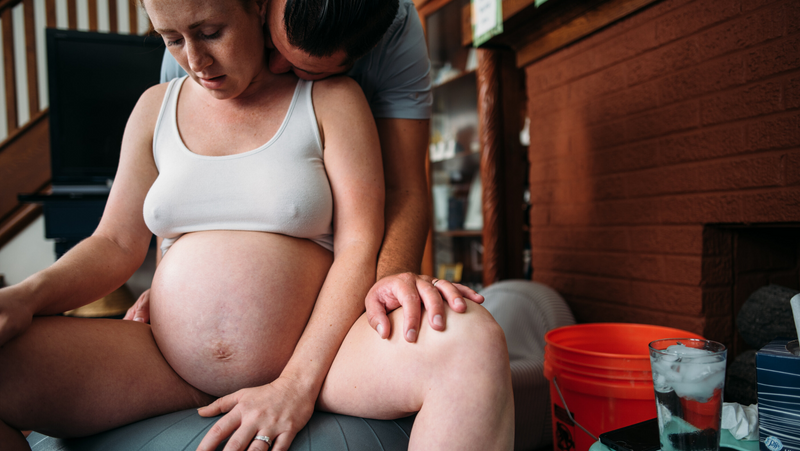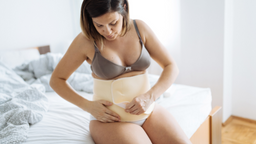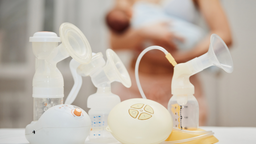By Sarah, IBCLC, CD, CBE
Let’s face it, labor is hard work and requires creativity and instinct to help move the process along. Giving birth is not a sedentary sport. Active involvement can lessen your birth time, reduce pain and decrease the need for medications. Overall satisfaction with the birthing process comes from freedom of movement and allowing your body to do what comes naturally. Birth positions can be influenced by many different factors including setting, mother's choice, caregiver preference, or medical intervention. Contrary to images you may have seen in movies or books, the lithotomy (laying on your back with feet in stirrups) position is not always the ideal choice for women. For a healthy mother who wants to have an unmedicated birth, no position is off-limits. Experiment and explore what works for you!
Below are some popular positions. We always recommend trying to plan ahead for your desired birth but to also leave it open to see what feels best in the moment.

CHECKLIST FOR A CONDUCTIVE SETTING:
- Open space to avoid tripping
- Alternate settings as needed; bright, dim, warm, cool, quiet, busy, etc.
- Pillows
- Bed
- Rocking chair
- Birth ball
- Tub/shower
- Towels, sheets
- Birth stool
- Squat bar
- Music
- Massage oil such as Motherlove’s Birth & Baby Oil
- Partner
- Doula (if you decide that is the right fit for you)
THE SQUAT
Use this position in any way you find comfortable; birth stool, toilet, bed bar, wall bar and being supported by a partner are all optimal choices. Practice before your due date to get familiar with what feels right for you and build your quads to avoid fatigue. Ideally, your heels would be propped up with something whenever you assume this position.
Benefits
- Gives good pelvic alignment
- Helps baby use gravity and descent
- Better rotation
- Can give 10% more room for baby to move out
- Less work for pushing
- Gives best fetal circulation
- Increases urge to push
- Takes pressure off the tailbone
- Decreases need for episiotomy, forceps or vacuum
DRAWBACKS
- Fatigue
- Need a strong partner when using a supported squat
- Some studies suggest the risk of excessive blood loss for some mothers
SIDE LYING
It’s best to stay upright as much as possible but sometimes relaxation does the trick after working so hard. Try not to lay flat, and instead, use the incline position for better gain. To utilize this effectively, place props all around you and between your knees. Take a deep breath and let everything else truly support you.
BENEFITS
- Rest
- Comfort
- Helps baby rotate when needed
- Great fetal circulation
- Balances mom’s blood pressure
- Good for a medicated birth
- Takes pressure off the tailbone
DRAWBACKS
- Can slow labor if one lays on the left side for too long
- Pushing in this position can be awkward but sometimes effective for a baby finding him/herself in a challenging position.
STANDING, LEANING, WALKING, LUNGING, STAIR WALKING
Typically when the mother uses movement she feels productive throughout labor. Since walking comes natural to her and the baby is used to being “rocked,” this exercise can be the most beneficial. Intermittently try stairs, lunging, leaning and standing still.
BENEFITS
- Helps labor progress
- Keeps optimal pelvic alignment
- Aids baby with gravity
- Gives baby a better chance to correct a poor position
- Increases strength of contractions
- Decreases pain
DRAWBACKS
- Fatigue
- Usually cannot do too much with a medicated birth
HANDS AND KNEES, KNEELING and ASYMMETRICAL KNEELING
You can do this on any safe surface that gives a little cushion for comfort. Use pillows or blankets on the floor if you find yourself there. Be sure to have a support person around to help you up.
BENEFITS
- Takes pressure off the tailbone
- Helps baby rotate
- Better fetal circulation
- Increases oxygen
- Decreases need for episiotomy, forceps or vacuum
DRAWBACKS
- Fatigue
- Sore knees
- Sore arms
SITTING, RECLINING
The resting position with gravity still on your side. Using this option periodically throughout labor and pushing can help you get a resurgence of energy. There is nothing wrong with taking occasional breaks. Listen to your body.
BENEFITS
- Increases blood pressure
- Easy monitoring
- Less chance of tearing
DRAWBACKS
- Can slow labor when resting too long
If labor wakes you in the middle of the night and you are a low-risk, healthy mom-to-be, try to stay resting or sleeping as much as possible. Use your circadian rhythm to guide you as to when to take action or not. Alternating between resting positions and active movement throughout the labor and birth process can expedite your experience. Take time during pregnancy to practice getting into these positions with and without props and a partner. If you make the effort now to perfect these -sometimes awkward- positions, they will become instinctive rather than laborious. There is no right or wrong way to give birth, listen to your body.
https://www.ncbi.nlm.nih.gov/pmc/articles/PMC1948086/
Happy parenting!



